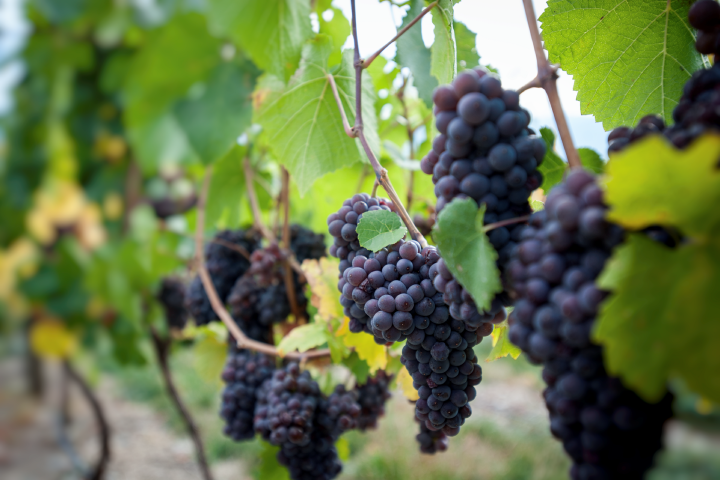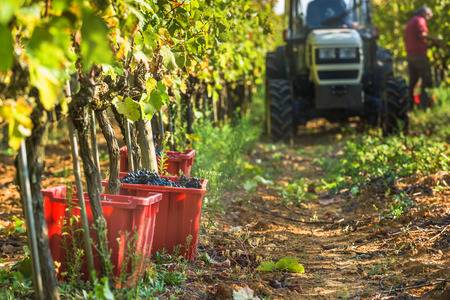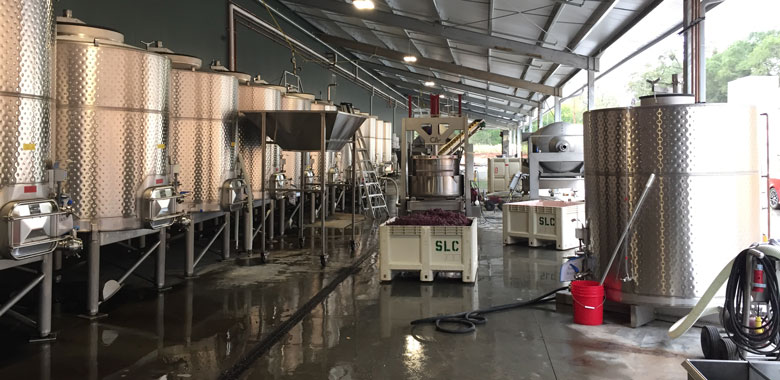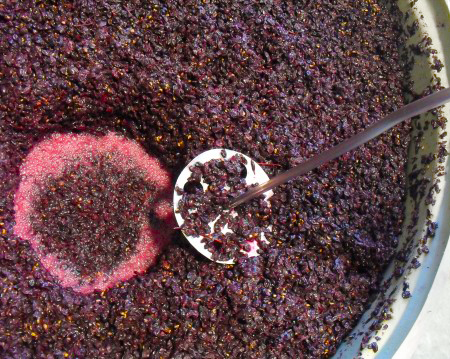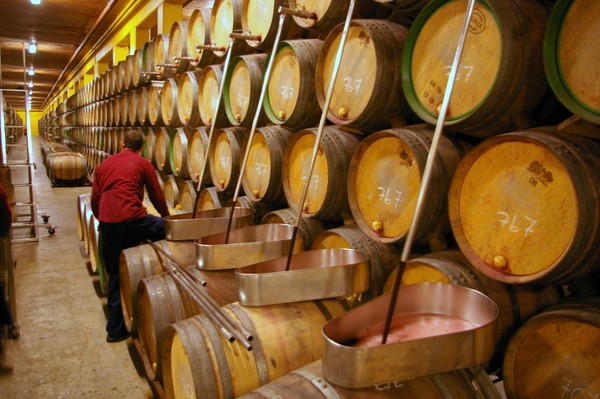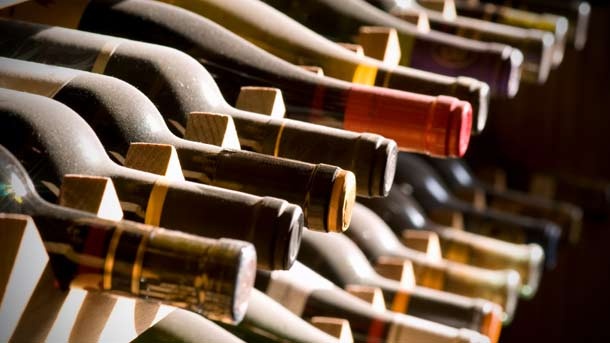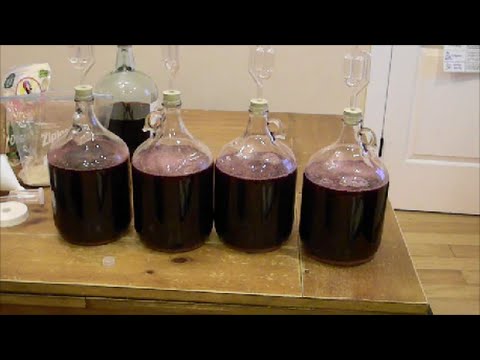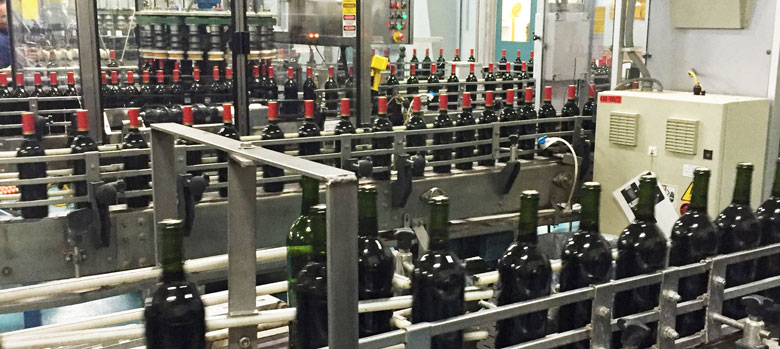Step 1:Fruit Testing
• For some wines the grapes are harvested based on taste and mouthfeel of the grape. Grapes for our wines are picked based on the taste of the grape.
• Some grapes are picked based solely on the BRIX (dissolved solids or sugar). Edelweiss is one of these grapes. If the BRIX is over 15% then a very “labrusca” or foxy flavor develops which is not desirable in wines.
• Chemical Makeup is the most widely used parameter for harvesting grapes.
PH between 3.00 and 3.70
Titratable Acidity (TA) between 8.00 and 12.00
BRIX as close to 22% and up to 30%.
Grape Sample Process
A minimum of 100 grapes is required for fruit testing to ensure they have the correct sugar content, acid level, and PH levels. If a section of grapes is over 400 plants then a sample quantity is one grape from every 4 plants. Grapes are not selected from the end 3 plants of a row unless there are less than 100 plants. Only one grape is selected from a plant unless there are fewer than 100 plants. Grapes are selected by blind selection (you do not look at the cluster when selecting the grape). If you look you will picked the best looking fruit. When selecting the fruit alternate between top of cluster, middle of cluster, and bottom of cluster. Do not discard bad or under ripe grapes.
Step 2: Harvest
Prep
• Remove netting
• Clean and sanitize picking buckets
• Clean and sanitize harvest tools
• Clean and sanitize crusher/destemmer
• Clean and sanitize pumps and hoses
• Clean and sanitize press
• Clean and sanitize fermentation tanks
Harvest
1. Start early in the morning to preserve the cool temperature of the grapes.
2. Pick all grapes of a specific variety.
3. Pick second crop grapes (significantly under ripe grapes) and drop them to the ground.
4. Remove damaged grapes from the cluster. If there are too many damaged grapes on the cluster the entire cluster is dropped to the ground.
5. Good grapes are harvested by hand and collected in 5 gallon buckets.
6. Once a bucket is full they transported to the crush pad.
Step 3: Crush Pad
Crush/Destem
1. Pour buckets of grapes as they arrive at the winery into the crusher/destemmer hopper.
2. Inspect them for bugs and damaged fruit. Some bugs such as Multicolored Asian Lady Beatles (Malbs) have a very low threshold for wine. Only 6 Malbs per 500 pounds of fruit can ruin the wine.
3. After inspection, the fruit is run through the crusher/destemmer.
Press
For grapes making white and blush wines
1. Must (crushed grapes) is put into the press.
2. Add rice hulls as the must is put into the press to aid in juice extraction.
• Approximately 1800 pounds of fresh must can be run through our 80 gallon press.
3. Pump extracted juice into a tank with a cooling jacket. A cooling jacket is a stainless steel jacket which surrounds the tank. Chilled glycol is pumped through the cooling jacket which in turn cools the wine.
4. Add 35 ppm (parts per million) of SO2 to the juice to prevent spoilage.
5. Cool juice to approximately 21 degrees Fahrenheit.
For grapes making red wines
1. Put must directly into fermentation tanks.
2. Store tanks in a cooled environment to aid in temperature control.
3. Add 45 ppm (parts per million) of SO2 to the must to prevent spoilage.
Step 4: Fermentation
Red wines
• Maceration
1. Put must directly into fermentation tanks.
2. Store tanks in a cooled environment to aid in temperature control.
3. Add 45 ppm (parts per million) of SO2 to the must to prevent spoilage.
4. Add yeast to the must. The fermentation process extracts the tannins (coloring agents and flavor compounds from the skins and seeds).
5. Press the must when the fermentation process is 60-70% complete. Approximately 2400 pounds of macerated fruit can be run through the 80 gallon press. Rice hulls are also added during the pressing of the macerated must.
6. Pump the juice into a tank for the completion of fermentation.
Malolactic Fermentation
Some red wines will undergo malolactic fermentation. A culture is added to the wine after the primary fermentation. The culture converts the malic acid to lactic acid. This softens the wine and gives the wine a buttery flavor.
White wines
1. “Rack” (described in next step) juice once it has been cooled to 21 degrees Fahrenheit.
2. Add yeast when the temperature of the juice reaches 50 degrees Fahrenheit.
3. Keep temperature under 70 degrees Fahrenheit during fermentation
Step 5: Racking
After the primary and malolactic fermentation is complete the following steps take place after each racking:
1. Clean and Sanitize pumps, hoses, and tanks.
2. Pump wine from one tank to another.
3. Take free SO2, PH, and TA tests.
4. Add SO2 to maintain a 40-60 ppm level.
5. Monitor PH to ensure stability. If PH rises above 3.8 corrective actions are taken. (Several options exists. To complex to
explain at this point)
6. Monitor TA
7. Taste wine to ensure no spoilage is occurring.
(Racking occurs, one month, two months, and four months after fermentation)
Step 6: Aging
Stainless Steel Barrels
The majority of our wines are aged in stainless steel. The time period ranges from 5 months, for sweet wines, to 3 years for dry wines.
Oak Barrels
Aging in oak depends on age of the oak barrel. Wine can become over oaked if stored to long in new barrels. The basic rule of thumb is 6-9 months for new barrels, 9-12 months for 1 year barrels, and 12-16 months for 2 year barrels. Barrels older than two years are switched from red to dry white wines to give them a hint of oak.
Testing
Test wines every 1-2 months in the same manner as performed during racking.
Racking
Rack wines every 3-9 months after the initial racking process.
Step 7: Finishing
1. Cold Stabilizing
To prevent tartaric salts from forming in bottled wines, the wine is cold stabilized. Cold stabilizing is a process of chilling the bulk wine to a lower temperature than what the customers may store the wine.
1. Chill wine to a set temperature, i.e. 30 degrees Fahrenheit
2. Seed with cream of tartar. (The seeding cuts the process from 2 weeks to 2 days.)
3. Circulated the wine and maintain temperature for 2 days.
2. Heat Stabilizing
To prevent proteins from creating haze when the bottled wine is subjected to high temperatures, i.e. 110-120 degrees Fahrenheit. Several products can be used but the most common is bentonite. Bentonite has a high purity with high montmorillonite content and can be used at any stage of the winemaking process to clarify juice, wine, and cider. Its negative charge reacts to positively charged particles to precipitate them out. It prevents cloudiness while removing heat sensitive proteins. The bentonite is heated and mixed into the wine. After 2-4 days the wine is racked to remove the bentonite.
3. Hydrogen Sulfide removal
Copper sulfate is used to remove hydrogen sulfide and other reduced sulfur compounds which are the source of ‘rotten egg’ like smells. For best results, use as soon as possible after fermentation. If racking the wine once or twice during fermentation didn’t eliminate the problem. Bench tests are used to determine the minimum effective dose.
4. Color Correction
PVPP, Divergan F, powder (Polyvinylpolypyrrolidone), is used primarily with white wines which provides rapid clarification, reduction in bitterness, and reduction of brown colors in white wines. It also reduces a lot of color in red wines but improves the hue.
Step 8: Blending
Most wines are blended to incorporate various complexities into the wine.
1. Utilize Bench trials to determine the best blends.
2. Perform customer trials to determine marketability of the tested blends after acceptable blends are created,
3. Perform stabilization processes after wines are blended
Step 9: Bottling
Pre-bottling
1. Adjust free SO2 between 30-50 ppm up to 2 weeks prior to bottling.
2. Add potassium sorbate to prevent bottle fermentation if residual sugar is present in the wine,
3. Clean and sanitize equipment used in the bottling process. Equipment includes:
• Hoses
• Clamps
• Pumps
• Filter components
• Bottling machine
• Corker.
4. Clean and sanitize bottles using a SO2 solution.
5. Test bottling machine to ensure the proper quantity of wine is added to the bottles.
Bottling
1. Pump wine through a wine filter.
• Wines with residual sugar are filter with an absolute .45 micron filter.
• Dry wines are filter with a 1 micron filter.
2. Wine passes through the filter and enters the bottling machine reservoir.
3. Place bottles on the bottling machine to fill the bottles.
4. Cork the bottles after they are filled
5. Place foils on each bottle
6. Use a foil shrink to shrink foils to the bottle
7. Clean bottles to remove any dust or wine that may have gathered on the outside of the bottle.
8. Label the bottles.
9. Store bottles until ready to sell.
Once the wines are labeled they are ready to sell and concludes the wine making process. Making wine takes a lot of patients, time, and trials. Several years of experience is needed to get a bottle of wine to a selling point, and many more years to perfect it. Like anything else, making wine is an art and is up for interpretation.
Top countries of wine production in world
Wines are a popular beverage with different variants and qualities depending on the process and countries where the wine producing took place. Even though they have been around for a long time, it hasn’t lost its flair but as the saying goes “it has aged like fine wine.”
1.Italy –
Italy is one of the top three wine producing countries on the planet but was only recently in 2017, struck by a bad case of frost and drought that affected young grape trees and caused about 23% drop in the yearly quantity of wine produced. Italy is known for the production of Trebbiano wine.
2. France –
France is known as the home of wine, with a history dating back to the 6th century BC. In a year, nearly 8 million bottles of wine can be produced in France and around 33% of this is exported all around the world. Wine is produced all across the country, however, bordeaux is the most popular region thanks to its grape variety. The French are fiercely proud of their wine and take steps to ensure that the quality remains at the highest standard possible. As the home of some of the most expensive wines on the planet, they’re here to show exactly how it should be done.
3. spain –
Spain, a European country is like the other two one of the major wine exporters globally even with its similar frost fate. These mentioned European countries are the world leading producers of wine, accounting for about 70% of the world’s wine production according to world stop exports.
4.the united states of america –
The USA is fourth on this list thanks to California; the state accounts for the majority of the wine production in the USA, boasting of a good range of grape varieties. Washington, Napa Valley, and Sonoma county are not left out in recognition.
5. Argentina
Wine producing in Argentina dates back to the 16th century and is favored by the nature of the soil and weather within this region and have allowed them a favorable market locally and internationally.
6. Australia
Australia boasts over a hundred wine varieties planted all around the country and in every state. Even though they produce a good variety of wines at reasonable prices, its chardonnay is the highest amount of white wine produced.
7. China
China has a good stand on the list of wine producers and are also huge consumers of wine not just local brands but also foreign brands, hence their high numbers in their import column as well as export column
8. South africa –
Although newly recognized for wine production, historical records have shown that production of wine in South Africa dates back longer than it was recognized.
9. Chile –
Wine production in Chile has reported fluctuating volumes yearly, but they still stand as one of the big players of wine production with their proud ‘Lost Varietal of Bordeaux.’
10. Germany –
Germany is famous for its riesling and these grapes account for a fifth of all wine grapes planted across the country. Alongside the riesling, Germany is also famous for its white wines as the cooler climate ensures that their whites are lean and crisp, with heightened acidity. Wine is produced in many regions across Germany, however, experts consider the finest German wines to be from the steep slopes in the river valleys.
|
Country
|
2013
|
2014
|
2015
|
2016
|
2017
|
|---|---|---|---|---|---|
| Italy | |||||
| France | |||||
| Spain | |||||
| United States | |||||
| Australia | |||||
| Argentina | |||||
| China | |||||
| South Africa | |||||
| Chile | |||||
| Germany | |||||
| Portugal | |||||
| Russia | |||||
| Romania | |||||
| Brazil | |||||
| Hungary | |||||
| Rest of World | |||||
| World |
Why cork stopper is best for wine bottle?
Cork is used to stop wine bottles because its structure renders it light, elastic, and impermeable to most liquids and gases, thereby keeping the quality of the wine. Corks are produced using the bark of cork trees (a type of oak, Quercus suber ) grown in the western Mediterranean, especially in Portugal.
Unless you drink boxed wine to the exclusion of all others, cork has played a role in your wine journey.
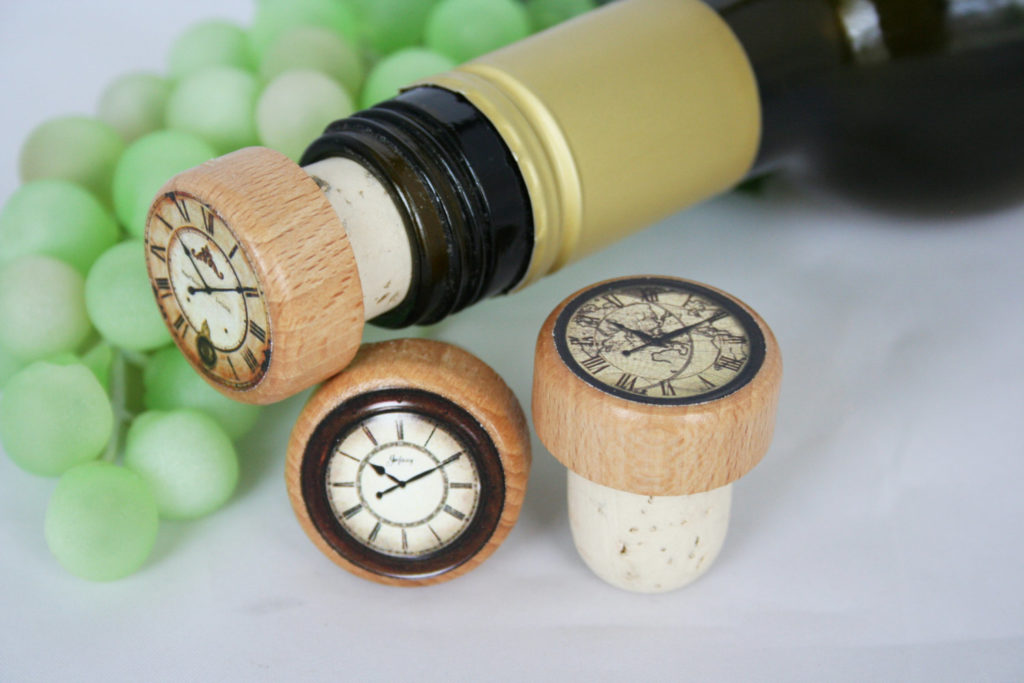
Just because wine glasses are bigger than ever before, doesn’t mean that you have to (or even want to) finish an entire bottle of wine in one sitting. Sometimes you want to savor a glass or two now and save the rest for later, especially if it’s a really nice wine. That’s why it’s good to have a wine stopper on hand, something that’ll keep wine fresh after opening. And though you might be picturing one of those decorative wine stoppers, like the one with a shamrock that you got at your cousin’s wedding, those are kind of useless when it comes to preventing wine from spoiling or spilling. That’s why, to help you find the best wine stoppers.


